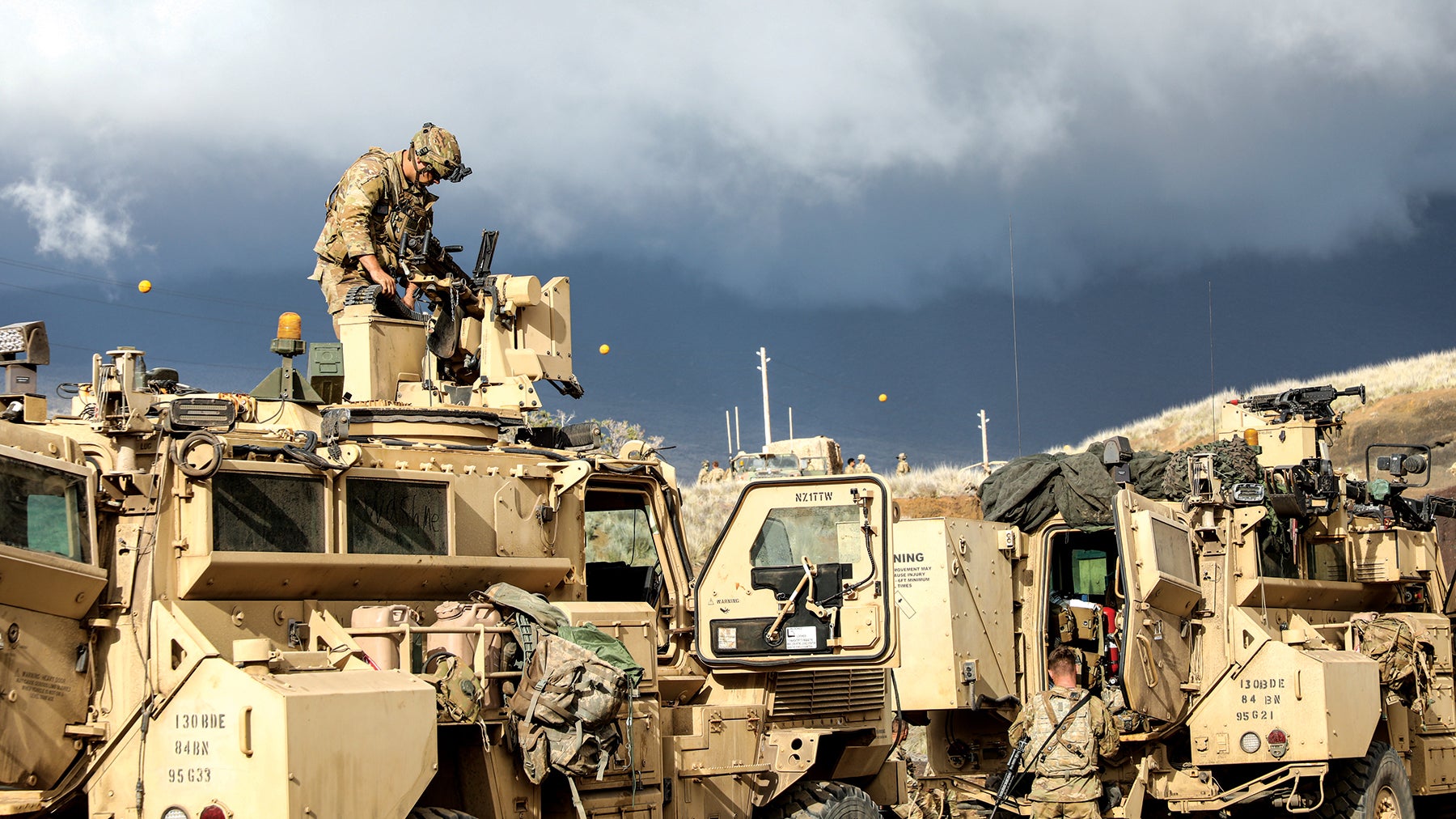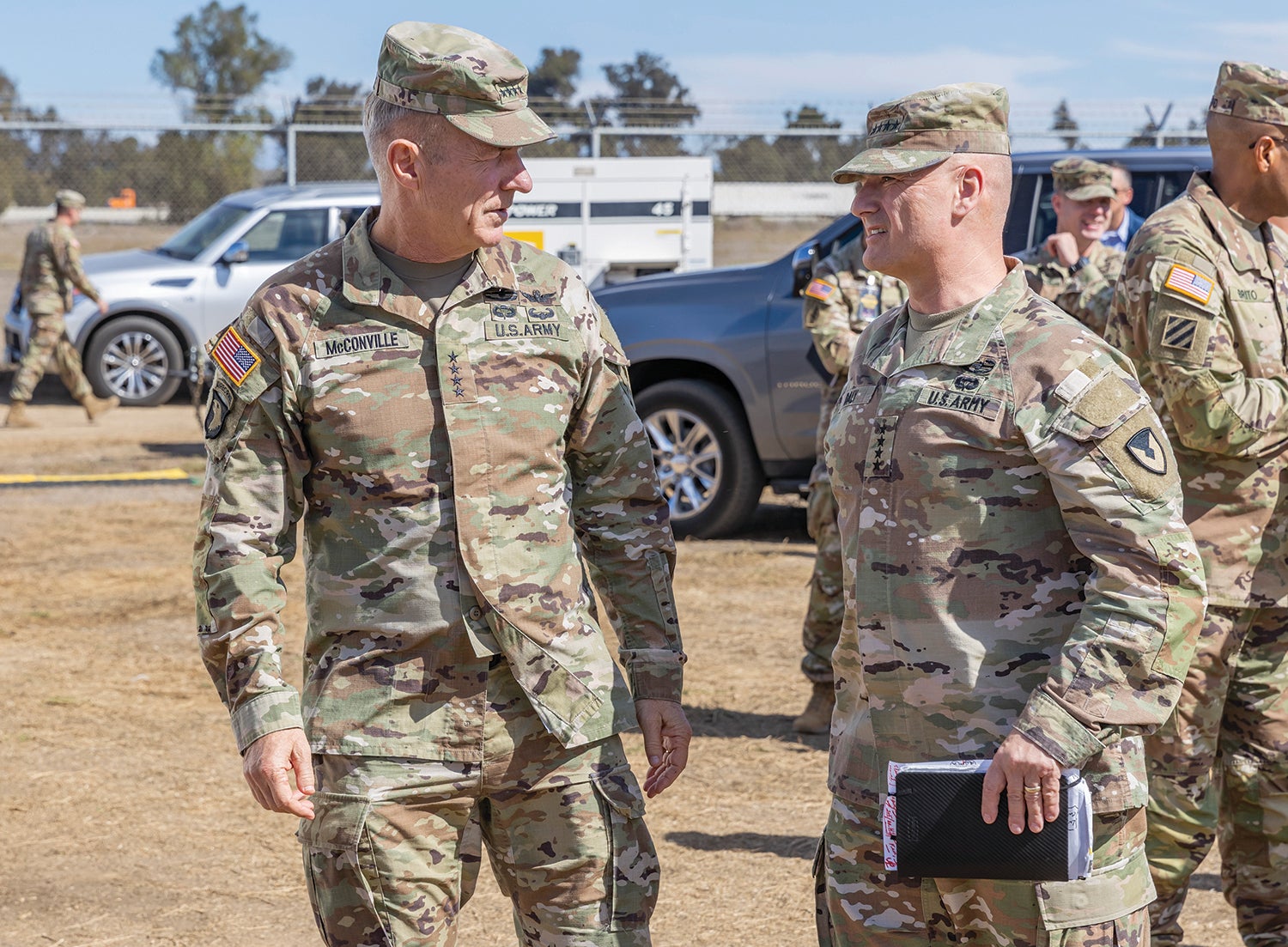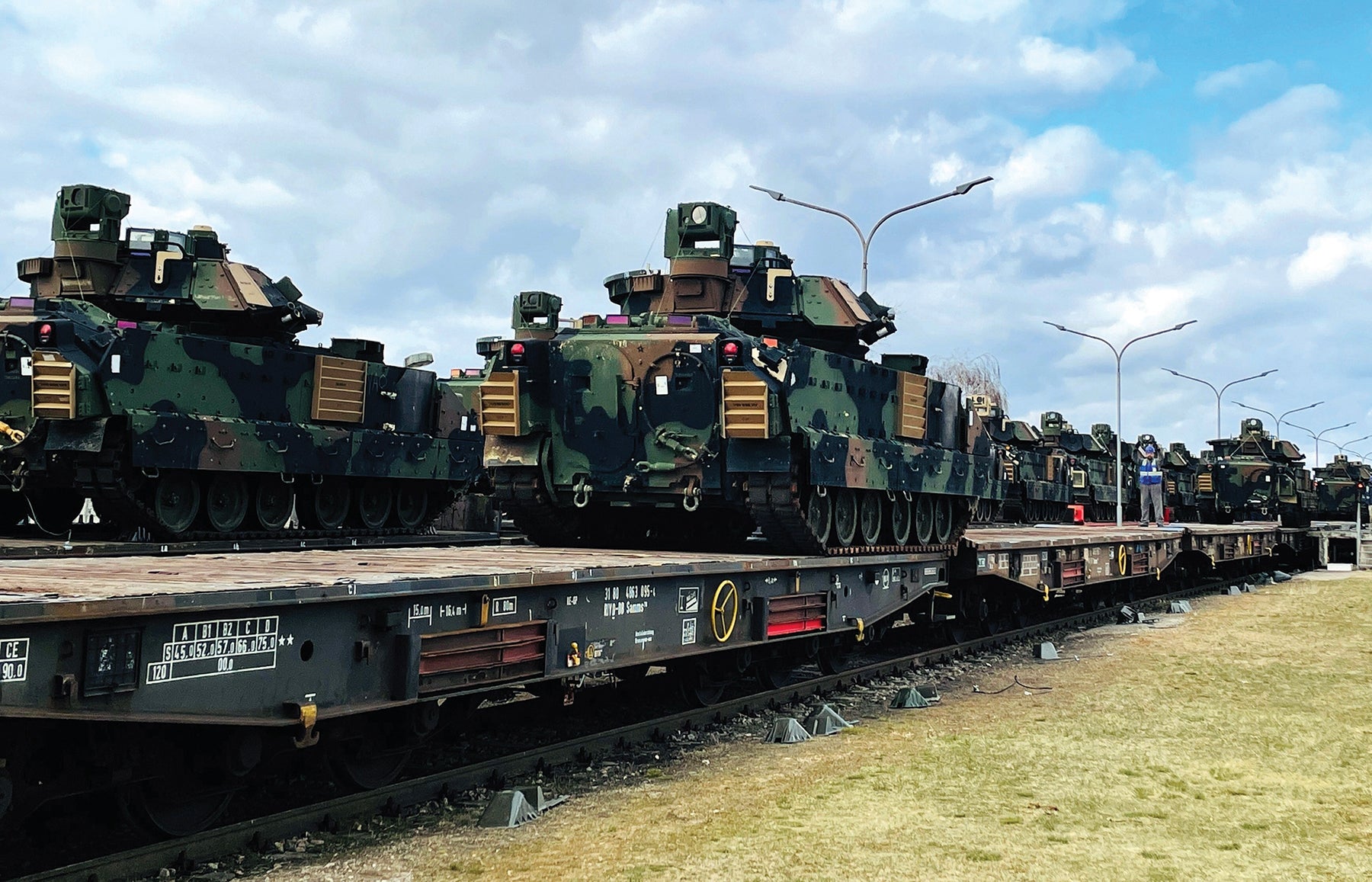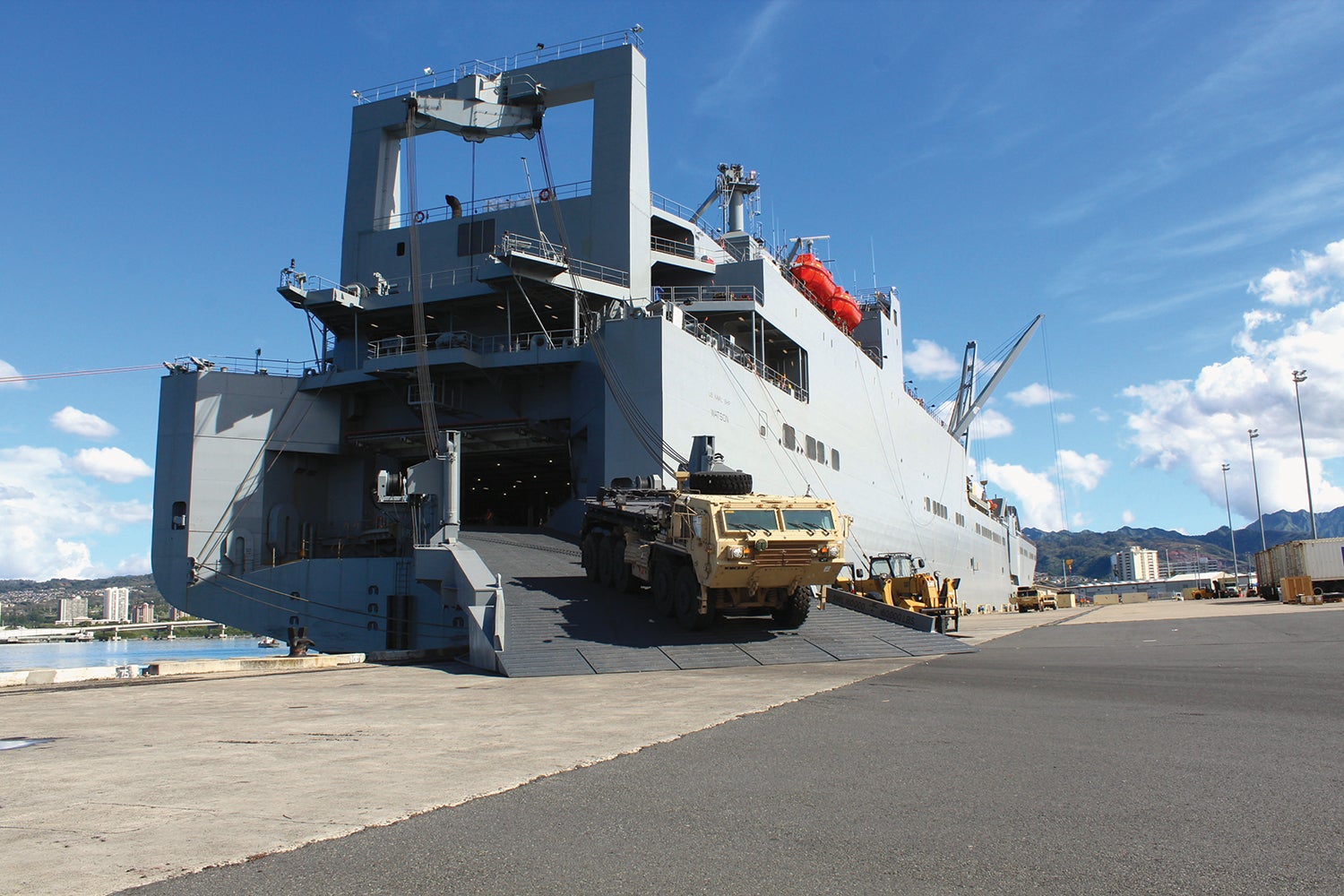The Army is in the midst of a generational transformation to ensure it maintains the capability and capacity to deter adversaries, campaign effectively, respond to crises and, if required, win decisively in combat. This transformation to a multidomain-capable force will change not only how the Army fights, but also what it fights with and how those future systems and equipment will be sustained and maintained in a contested environment.
The materiel enterprise is at the forefront of transformation efforts, rethinking how the Army provides logistics and sustainment support, to build the Army of 2030. As the Army transitions to a multidomain operations-capable force, it must modernize and transform the sustainment warfighting function capabilities now to respond and enable tactical and operational commanders to expand freedom of action, extend operational reach and ensure prolonged endurance.
Secretary of the Army Christine Wormuth addressed the future of Army sustainment as a key function in building the Army of 2030 during her keynote speech at the opening ceremony of the Association of the U.S. Army 2022 Annual Meeting and Exposition in October. She charged the Army, and the U.S. Army Materiel Command (AMC) specifically, to conduct a comprehensive review of existing experiments, war games, studies, planning scenarios, exercises and operations, viewed through a logistics lens in a contested multidomain environment, “to look at our requirements and focus on the opportunities presented by autonomous distribution, energy efficient combat systems and predictive analytics.”
This effort will serve as the framework to further assess and continue developing the Army’s critical role in logistics across the continuum of conflict and all phases of joint operations.

Out With the Old
Investing in and sustaining the future force begins with divesting old, damaged and excess equipment that the Army no longer requires. AMC leads the logistics and sustainment communities to execute distribution, redistribution and divestiture to efficiently build operational and strategic readiness, fill shortages, reduce excess and balance resources. The command’s Modernization Displacement and Repair Site effort sets conditions and supports the Army’s Regionally Aligned Readiness and Modernization Model, providing a one-stop place for units to turn in legacy or unserviceable equipment more easily and freeing up space for new, modernized equipment. Since fiscal 2021, units have turned in over 180,000 pieces of equipment at 14 Modernization Displacement and Repair Site locations. Legacy and enduring equipment and systems then can be redistributed from higher-modernization priority units to lower-priority units, sold to allied and partner nations through the Foreign Military Sales program or otherwise divested from units.
Unburdening units of obsolete equipment also reduces the demand for associated repair parts and makes way for modernization, enabling the multidomain operations-capable force of 2030 and beyond.
Along with divestment, the development and implementation of detailed, data-informed plans for targeted investment in infrastructure and facilities ensures that the Army maximizes the value of every dollar, operates transparently and wisely uses allocated resources to achieve its people, readiness and modernization priorities.

Facility Investment
Modernization is more than weapons systems—the Army must modernize its installation power projection capabilities and infrastructure, including motor pools, training ranges and other facilities, now to be postured to support, maintain and sustain next-generation capabilities.
AMC leads the Army’s effort in developing and implementing a holistic active Army Facility Investment Plan that identifies all requirements at installations and aligns resources with Army and commander priorities. The Facility Investment Plan uses the latest capabilities in data analytics to make smarter, more informed decisions for the Army’s 140,000-plus facilities. The plan is the Army’s playbook for making the right investments in the right facilities and infrastructure for quality of life, power projection and training. It provides a 10-year outlook, updated on an annual basis with input from Army and installation leaders.
Organic Industrial Base Modernization
The Army’s organic industrial base—23 depots, arsenals and ammunition plants—manufactures and resets Army equipment, generating readiness and operational capability throughout Army formations. Many of these sites were built more than 70 years ago for World War II and must modernize to keep pace with current and future Army equipment advances.
Through a 15-year Modernization Implementation Plan that will accelerate the planned investment of $16 billion, AMC is modernizing facilities, processes and the workforce to bring the organic industrial base into the 21st century, infuse industry best practices and maximize the skills and capabilities of the command’s workforce.
As it modernizes and retools for the future, the organic industrial base also must sustain current readiness across the force and maintain the ability to surge in support of crisis or contingency operations. Smart, targeted investment now will ensure that the base is postured to reduce vulnerabilities and single points of failure, sustain future equipment systems and ensure the continued readiness of the Army of 2030 and 2040.

Contested Environment
The way the Army has conducted sustainment operations, with large storage and distribution areas moving predictably along prescribed routes and distribution points, will be challenged in the future. The force no longer will have complete unchallenged lines of communication from its depots, arsenals, ammunition plants and installations through ports of embarkation and debarkation to the tactical edge.
Whether by cyberattack, terrorism or direct military action, future Army operations will be contested across all domains from the installation to the battlefield. The war in Ukraine has clearly demonstrated the importance of employing and protecting logistics and sustainment assets, as well as the absolute necessity for ensuring that units receive the supplies, ammunition and equipment required for sustained, successful combat operations.
To project and sustain combat power, the Army must execute anticipatory, agile logistics and reduce its logistics tail by improving power distribution, storage and maintenance. The force must modernize both systems and processes to protect deployed units and materiel in a contested environment.
Setting the Theater
Preparing to fight in a contested environment begins with setting the theater, providing strategic depth for sustainment across commodities and all classes of supply, and ensuring that Army forces can move quickly to, then throughout, an area of operation to accomplish their mission without a cold start to logistics.
Critical to setting the theater is pre-positioning people, munitions and equipment, including combat enablers such as sustainment, to provide the right effects at speed and scale. Equipment must be modernized and maintained at a high state of readiness, with each Army pre-positioned stocks set tailored to support geographic combatant commander requirements.
The Army must prepare to sustain large-scale combat operations within a contested operational environment, no longer solely relying on the sustainment resupply capabilities provided by forward operating bases. Joint and multinational experiments like Project Convergence 2022 allow sustainers the ability to examine emerging technologies, capabilities and interoperability in a contested logistics environment to inform decisions for the joint force of 2030 and beyond.
For example, the Army is testing autonomous distribution by land, air and sea, and seeking to maximize energy efficiency through lighter and more climate-resilient vehicles and headquarters.
The Army will not fight the next war alone, but rather as part of a joint and multinational force. The Army must be interoperable with allies and partners, especially in logistics, so it can utilize the full capabilities and capacity of Army, joint and multinational sustainment forces to conduct operational maneuver across the breadth and depth of the battlefield.

Predictive Logistics
Winning in a multidomain operations environment requires decision dominance through rapid, data-driven and resilient capabilities. The sustainment enterprise must invest in new tools and effectively leverage data to anticipate future requirements and get ahead of need. The Army is exploring sustainment technologies to improve its ability to conduct integrated anticipatory sustainment through an all-domain command and control architecture and data framework.
To accomplish this, the Army is investing in predictive logistics capabilities using networked sensors that automatically feed data from platforms into a common operating environment, enabling sustainers to monitor, anticipate and distribute repair parts, ammunition and fuel to the point of need; enable digital and predictive end-to-end maintenance; and improve enterprise fleet management.
The Army also must have the capability to rapidly integrate sustainment data within Mission Command systems to enable a more comprehensive and relevant common operating picture for commanders down to the lowest level.
Doing It Right
It is people who will enable the service to sustain the Army of 2030. The Army must rightsize the sustainment enterprise, focused on the division as the unit of action in multidomain operations, then recruit, train and retain the best talent possible, matching the right people with the right skill sets at the right place to achieve maximum effect.
Shaping the future force goes beyond materiel modernization, or what we fight with—it also encompasses the doctrine, organization, training, materiel, leadership and education, personnel, facilities and policy framework. Just as new technology, systems and equipment necessitate new doctrine and maneuver force structures, so too do they necessitate new training, facilities, methods and the associated people with the right skills and force structure to supply, maintain and sustain those systems and units.
AMC is optimizing its supply chain to infuse industry best practices to standardized processes, reduce risk with vendors, invest in organic manufacturing to offset vulnerabilities and better adapt long-range plans to changes in the environment. Supply chain optimization seeks to improve effectiveness by ensuring that supply chain management is both data-driven and efficient. The optimization efforts will impact more than 2,000 professionals working within supply chain management across the AMC enterprise. Supply chain optimization also aims to better support these professionals, realigning their focus areas and offering additional training opportunities and career enhancement.

Keeping Pace
The Army is transforming, and the sustainment enterprise must keep pace with every modernization effort to ensure it maintains a strategic advantage over America’s adversaries. We cannot allow the Army to modernize without transforming the sustainment warfighting function capabilities for the future to sustain and maintain combat-credible land forces ready to fight and win in a multidomain operations-contested environment.
By smartly divesting old, legacy equipment and investing in new facilities, preparing to execute logistics in a contested, multidomain operations environment, using data to drive predictive logistics and anticipate need, and focusing on people and the sustainment organizational structure, the sustainment enterprise will be postured to enable the Army of 2030 and support the design of the Army of 2040 to fight and win anytime, anywhere and under any conditions.
__________
Change at the Top

The U.S. Senate has confirmed Lt. Gen. Charles Hamilton, deputy Army chief of staff for logistics, to be the next commander of the U.S. Army Materiel Command and to be promoted to four-star general.
* * *
Gen. Edward Daly became the 20th commanding general of the U.S. Army Materiel Command, Redstone Arsenal, Alabama, on July 2, 2020. Previously, he served as AMC’s deputy commanding general and senior commander of Redstone Arsenal. Other recent assignments include commanding general of the U.S. Army Sustainment Command and chief of ordnance and commandant of the U.S. Army Ordnance School. He deployed to Iraq and Afghanistan in support of operations Desert Shield, Desert Storm, Iraqi Freedom and Enduring Freedom, and has been assigned overseas to Korea, Italy and Germany. He graduated from the U.S. Military Academy at West Point, New York, in 1987, and has two master’s degrees, in business administration and strategic studies.

